Don't Pass Up on the Advantages of Ceiling Heating!
By Editorial Team
Updated on September 20, 2024

Heating solutions are in a state of flux; they're more diverse than ever, most notably because, nowadays, residential constructions benefit from options that were once reserved for commercial buildings. Case in point: the heated ceiling.
While it’s a great alternative to radiant floor heating, it’s still little used in Quebec residences. Yet, it’s beautifully discreet and allows you to set up any room however you want without considering wall-mounted heaters or limited flooring options.
So, how does it work? What are the defining aspects of ceiling heating solutions, and what are the advantages and drawbacks of the different models available? Read this article to learn all about it.
What is ceiling heating?
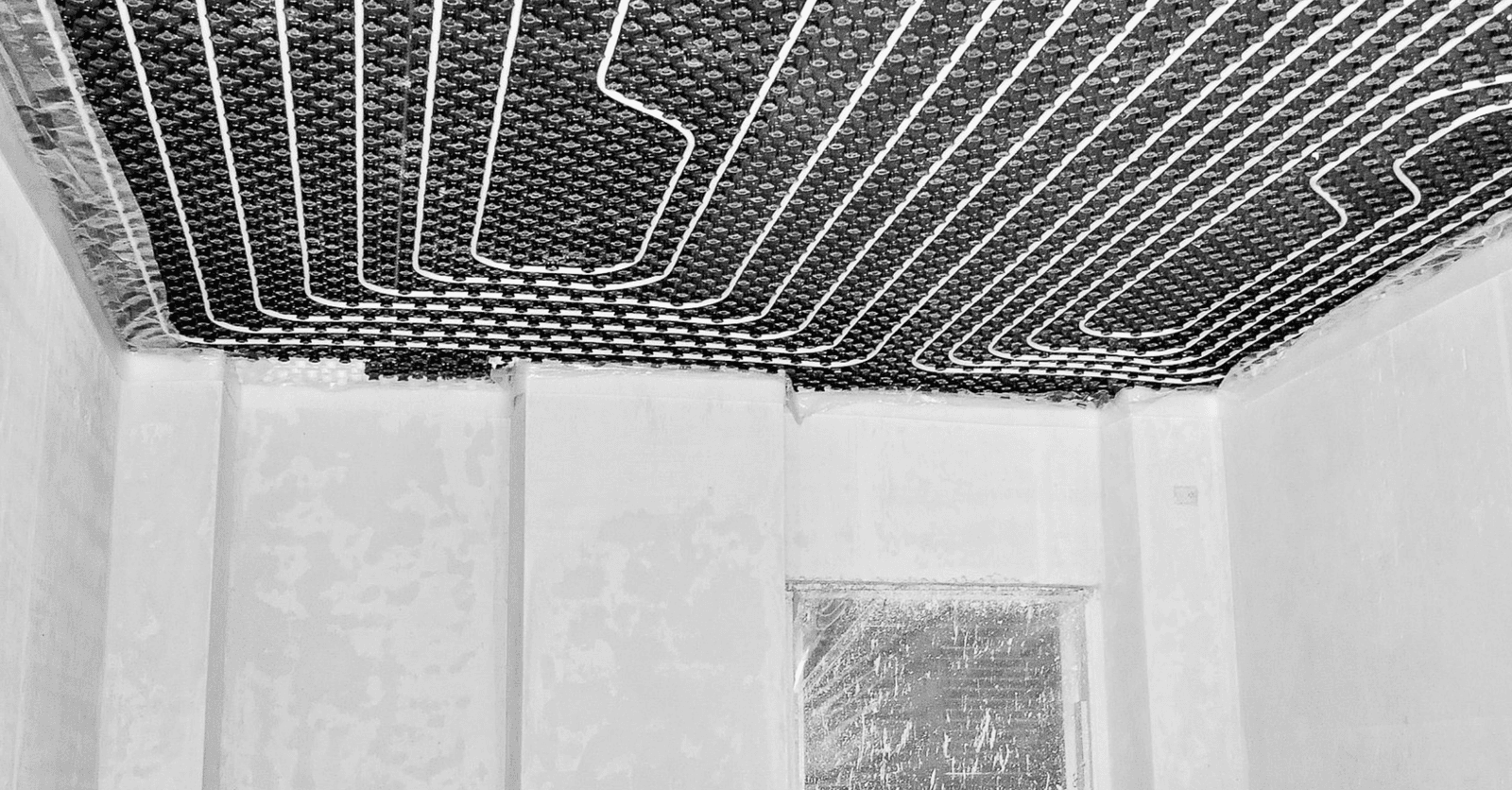
Source: Canva
Ceiling heating is definitely a heating solution you'll want to look into. It ensures unparalleled thermal comfort. Nevertheless, it’s not the only reason homeowners should consider this type of heating system—it has one of the lowest energy consumption.
At first glance, the idea of heating your home via the ceiling may seem like you’re defying the laws of physics. Hot air rises; it’s undeniable. So, how can a room be heated if the heating device is ceiling-mounted? Well, the answer is relatively straightforward: A ceiling heating system doesn’t warm up the air, but rather masses (people and objects).
Thermal radiation from a ceiling heats just like the sun’s rays. Upon contact, objects and people in its vicinity will feel the system's warmth. The air inside the space warms up, too, when in contact with warm objects. The comfort provided means you can heat your home at a temperature lower than you’d typically require with another heating system.
The heat transfer rate through ceiling radiation is 80%, while only 20% is via convection.
The heat generated by radiation-based heating systems will be absorbed by inside surfaces (walls, floors, ceiling), increasing their temperature, while convection heating systems don’t work like that. For example, when a ceiling reaches a temperature of 23°C, the floor is at 19°C, and the walls are between 19°C and 20°C. All interior surfaces radiate and emit heat. And, since the human body swaps about 35% of its heat via radiation, it increases comfort.
* The percentages indicated are for reference only. They can vary based on the insulation's quality as well as other factors.
How does ceiling heating work?
An electric ceiling heating system works much like a radiant floor heating system.
This heating solution uses electric cables or a hot water pipe network. No matter the method, the device’s wiring is on the other side of the ceiling. The heat emitted through radiation is diffused evenly in the room via exterior panels concealed by drywall.
An electric ceiling heating system is connected to a thermostat and the home’s electric system. On the other hand, hydronic ceiling heating systems are fueled by a reversible heat pump. Yet, in either case, the temperature is set in such a way as to maintain optimal thermal comfort, whatever the season.
The Advantages of Ceiling Heating
The benefits of ceiling heating are very similar to those of floor heating…with a few other perks. Let’s start off by saying that while radiant floor heating is complicated—or near impossible—to install in a home, ceiling heating will often be considered a quick and easy heating solution, especially during a remodel.
Not unlike floor heating, the heat diffused unfolds gently and evenly. There are no obstacles.
When it comes to choosing a heating system, energy consumption is one of the factors that most people first consider, and ceiling heating allows you to save financially.
Since the system has little inertia, it can swiftly heat a room. The temperature climb will typically happen within 30 minutes. This system also reacts pretty well to weather changes, and its temperature can be regulated throughout the building, ensuring a continuous comfort level.
Ceiling heating allows you to gain space-wise (it only lowers ceiling heights by about 10 centimetres or so) and leaves you access to all your walls to set up your furniture as you want, and you can also choose whichever flooring you want. Lastly, its installation is rather quick and requires little maintenance afterwards.
NOTE: Installing a ceiling heating system requires roughly 10 centimetres of ceiling space. However, the room’s ceiling must be at least 2.5 metres high.
The Different Types of Radiant Ceiling Panels
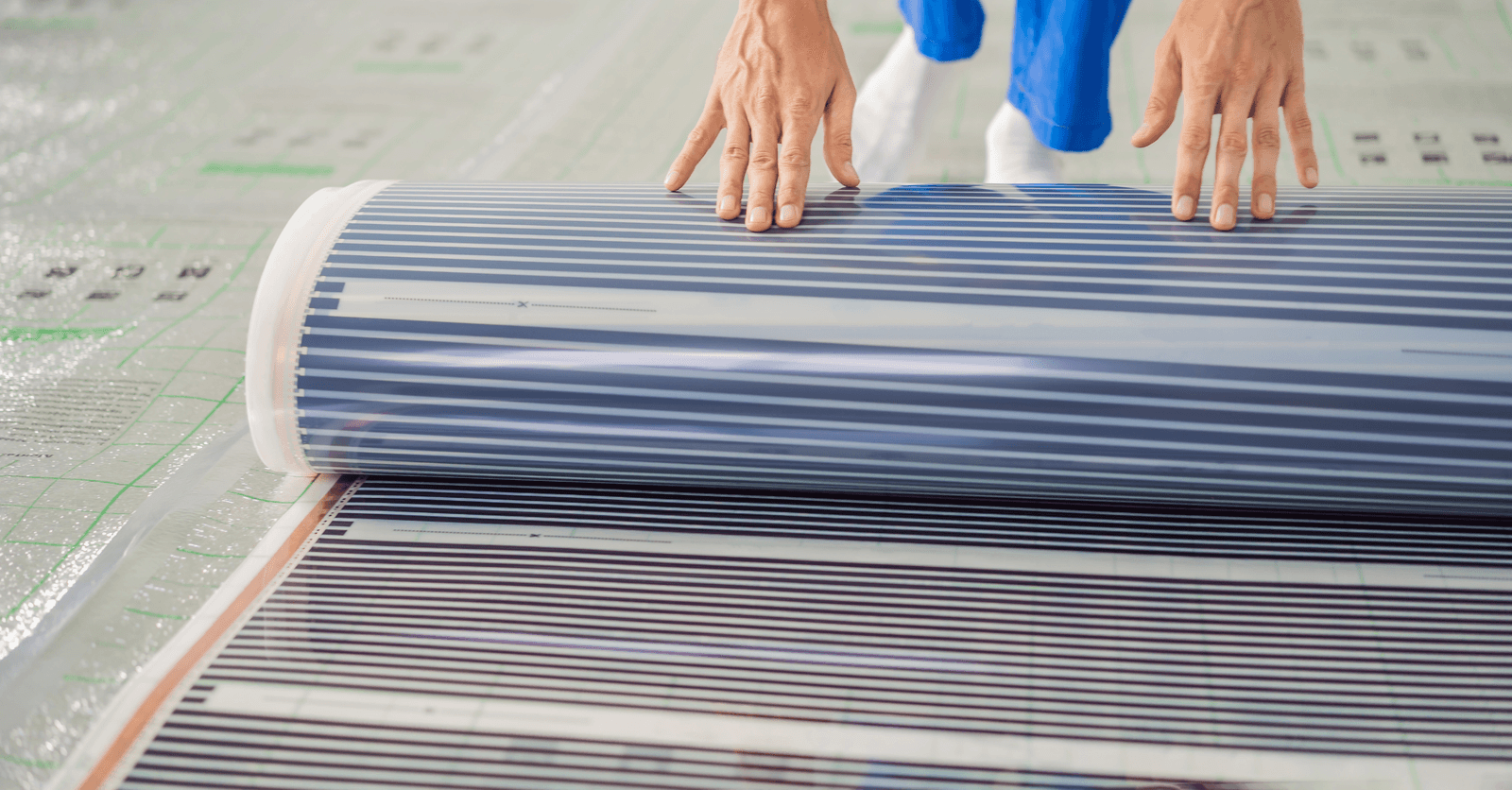
Source: Canva
Compared to different heating systems, radiant ceiling panels evenly produce heat over 60-90% of a surface area, compared to the 3-7% of radiators and the 50% of radiant floors.
Ceiling heating provides swift comfort and significant financial savings. While an electric baseboard instantly heats, providing heat throughout a confined space will still take quite a bit of time. With a radiant heating system, you can feel the heat immediately.
As for ceiling heating, more and more options are available for consumers.
Electric Ceiling Heating
The workings of electric ceiling heating panels
Two types of electric ceiling heating systems exist—radiant panel modular (RPM) and plasterboard radiant ceilings. In either case, the heat is emitted into the room through radiation. While their mode of operation differs, their pros and cons remain the same.
Pros
Swift temperature climb
Homogeneous comfort
Allows for space gain by simply taking a few centimetres off the ceiling height
Can be done during the building or remodelling process
Maintenance-free
Cons
Ceilings must be at least 2.5 metres high for the best possible installation
Its installation is more complex compared to other electric solutions
Installation is more expensive
Infrared Ceiling Heating
The workings of an infrared radiator
There are two types of infrared radiators. First, short-wave radiators are equipped with heat-producing halogen lamps. Said heat is transmitted to objects through radiation. Given its short range, it's mainly used as an additional heater or as a patio heater.
Secondly, long-wave radiators are equipped with a resistance-heated carbon plate. They’re highly prized for their decorative appeal and are designed to heat people and objects.
Pros
Heats rapidly
Generates an even and comfortable heat
Noiseless
Doesn’t generate airflow; it contributes to a healthy, pleasant atmosphere
Maintenance-free
Fitted with a thermostat, regulates temperature with precision
Discreet, suits any room
Cons
Only lightweight and thin models can be ceiling-mounted
Not energy-efficient
Relatively expensive if used throughout the entire residence
Radiant Panel
The workings of a radiant panel
Radiant panels heat through both convection and radiation. It consists of a carbon plate or metallic alloys heated by electric resistance and a sort of honeycomb façade that diffuses heat.
It directly heats walls, furniture, and people. The heat is then distributed throughout the room by radiation through the different masses present.
Pros
Performance-wise, it generates an even and pleasant thermal comfort
More cost-effective than a convector
Its temperature climb is quick and even
The wall behind the equipment doesn’t need to be insulated
Some unique models are made from noble materials and perfectly blend in with the décor
Radiant panels are either installed vertically or horizontally to fit the designated space
Doesn’t spread dust
Enables heating regulation and programmable settings for the entire house
Cons
It can be deemed energy-intensive when used as the central heating system
The absence of an inertia-based functioning lowers the perceived comfort level and leads to a temperature difference between the floor and ceiling
It shouldn’t be used in older buildings
The control system may be too rudimentary to manage the temperature precisely
Once turned off, it completely ceases to heat, which leads to a quick change in comfort levels
It tends to dry out the air
It’s rather an expensive purchase based on its performance level
The panels’ positioning will affect the system’s overall performance
Fan Heaters and Ceiling Fan Heaters
The workings of a ceiling fan heater
It has a three-step process. First, the ambient air is drawn into a fan, then warmed up through resistance, and, lastly, blown back into the room.
Pros
Very useful during extremely cold periods
Allows you to heat a room efficiently
Cons
An electric fan heater can only be used as a space heater. It can’t effectively heat an entire dwelling over an extended period.
Water-Bearing (or Hydronic) Ceiling Heating
The workings of water-bearing surface heating
(See section detailing the different types of systems.)
Pros
Very good at regulating temperatures
Diffuses a gentle and homogeneous heat throughout the entire house
The radiation is strong enough to warm the floor to the touch
The heat diffused won't be hindered by any obstacles
Quick temperature climb
Allows to save on electricity bills
Maintenance-free
It can be installed in a new home or during a home remodel
Fosters a better relative humidity level
It’s a reversible system, meaning you can benefit from air conditioning too
Cons
It’s expensive
Complex installation process
How to Install a Radiant Ceiling
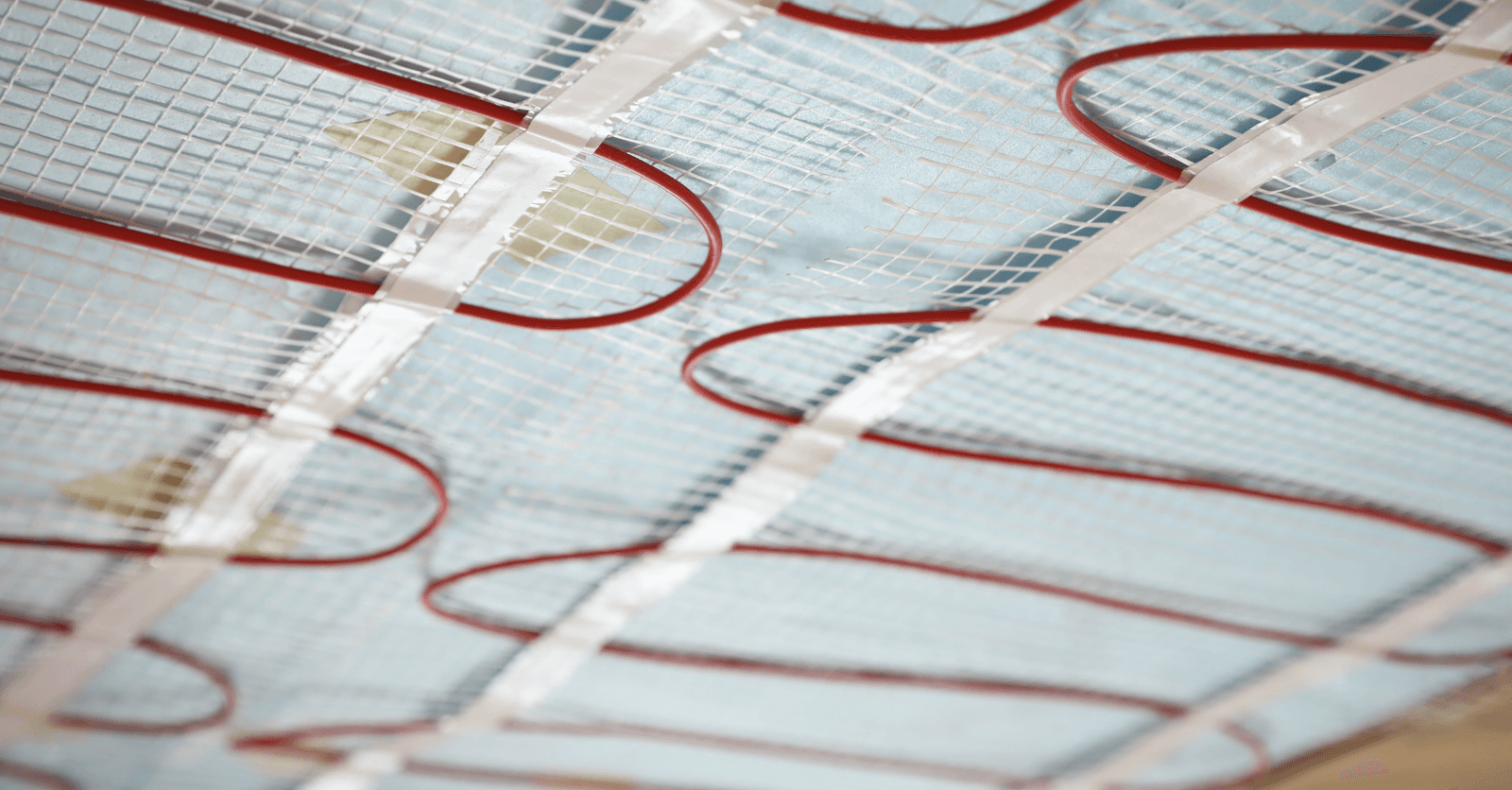
Source: Canva
There are three different types of products:
A radiant panel modular system has panels fitted with heating elements, mineral wool, and a finishing layer.
Plasterboard radiant heating has freestanding panels, insulation, and electricity-fueled heating films.
The water-fed or hydronic version is fueled with a water boiler. It’s a closed-circuit system working with hydronic pipes.
Since every ceiling heating system is unique, their installation methods will differ.
Installing a Radiant Panel Modular System
Radiant modular panels are supported by metal furring, much like T-bar ceilings. The ceiling is then closed over with a neutral and decorative panel of your choosing.
Installing a Plasterboard Radiant Heating System
Heat-producing plasterboards are supported by the same metal furring used for T-bar ceilings. The panels are covered by standard drywall panels once connected to the electrical network.
Installing a Hydronic System
The water pipes are affixed to the ceiling, covered by insulation and concealed by suspended ceiling panels. The water pipes are connected to a reversible heat pump or boiler.
Using a Ceiling Heating System in Specific Areas
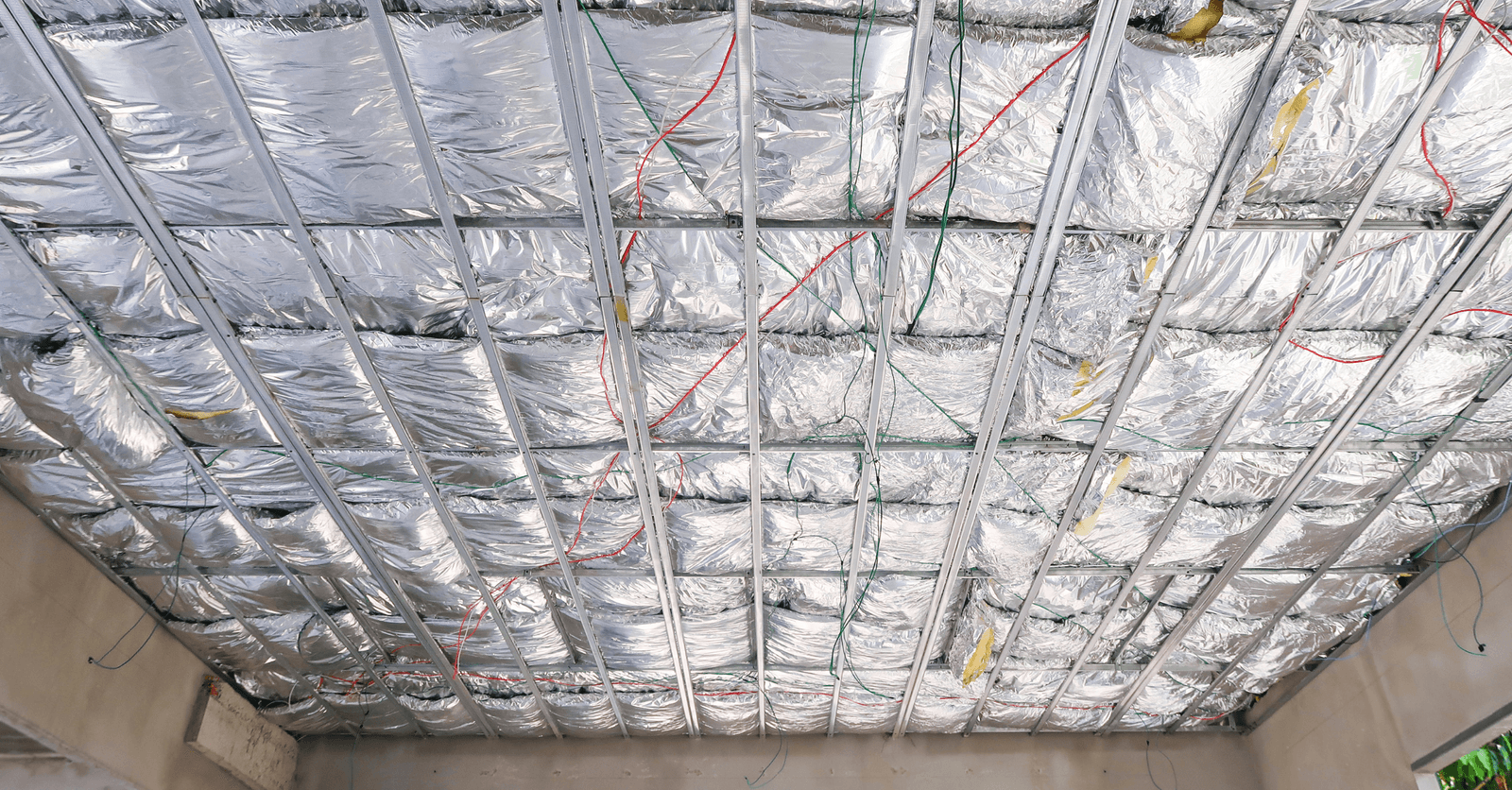
Source: Canva
Naturally, regarding heating, a household’s needs differ from room to room, whether it’s regarding the amount of space available or the occupants’ needs: additional space heater, confined space, suspended ceiling, etc.
Therefore, some solutions are a better fit compared to others. Below are some noteworthy suggestions.
Bathroom Ceiling Heating
In a bathroom, ceiling heating may be preferred to a radiant floor. Once the plumbing devices are installed, the space available to heat a floor can often be too limited for the system to be efficient enough as a main heat source. Whereas, in a ceiling, there’s a lot of space!
For optimal comfort, it’s best to use a pulse-based electronic controller.
Infrared panels are perfect for heating a particular space at any given time. The heat is instantaneous, much like the comfort level experienced.
A ceiling fan heater quietly distributes heat above head level, making it ideal for bathrooms with limited wall space. It can be installed near the shower or bathtub. Since this device circulates air around the room and efficiently diffuses heat, it reduces the likelihood of foggy mirrors or windows.
Kitchen Ceiling Heating
With a ceiling-mounted radiant heating system, heat is dispersed onto surfaces, objects, and people.
Infrared ceiling panels are flat heating panels that can be easily affixed to a ceiling or built-in. They’re subtle, easy to install, and can be wall-mounted or inserted into a suspended ceiling furring.
What is the best garage heating system?
The ceiling-mounted fan heater is, by far, the winner here. It’s an affordable heating solution that’s both fast and near-noiseless. Additionally, it typically boasts a stylish design and is available in bright colours.
What heating system is best suited for high ceilings?
Infrared radiators are perfectly suited for high-ceilinged rooms. Some are more energy-efficient than others and are remarkably efficient in large areas.
The Smart Rooms panels are a great option. These panels have electrical wire circuits available in two different shapes. They’re inserted between the ceiling joists and then concealed with standard gypsum boards. They can also be left exposed.
Get 3 quotes for your ceiling heating project
RenoQuotes.com can help you get quotes for your heating and air conditioning project. When you submit your project, we’ll put you in contact with top-rated contractors. Fill in the form on the homepage (it only takes a few minutes) and get estimates from trusted professionals.
Dial 1-844 828-1588 to speak with one of our customer service representatives.
Looking for something else?
Related articles
The latest industry news, interviews, technologies, and resources.
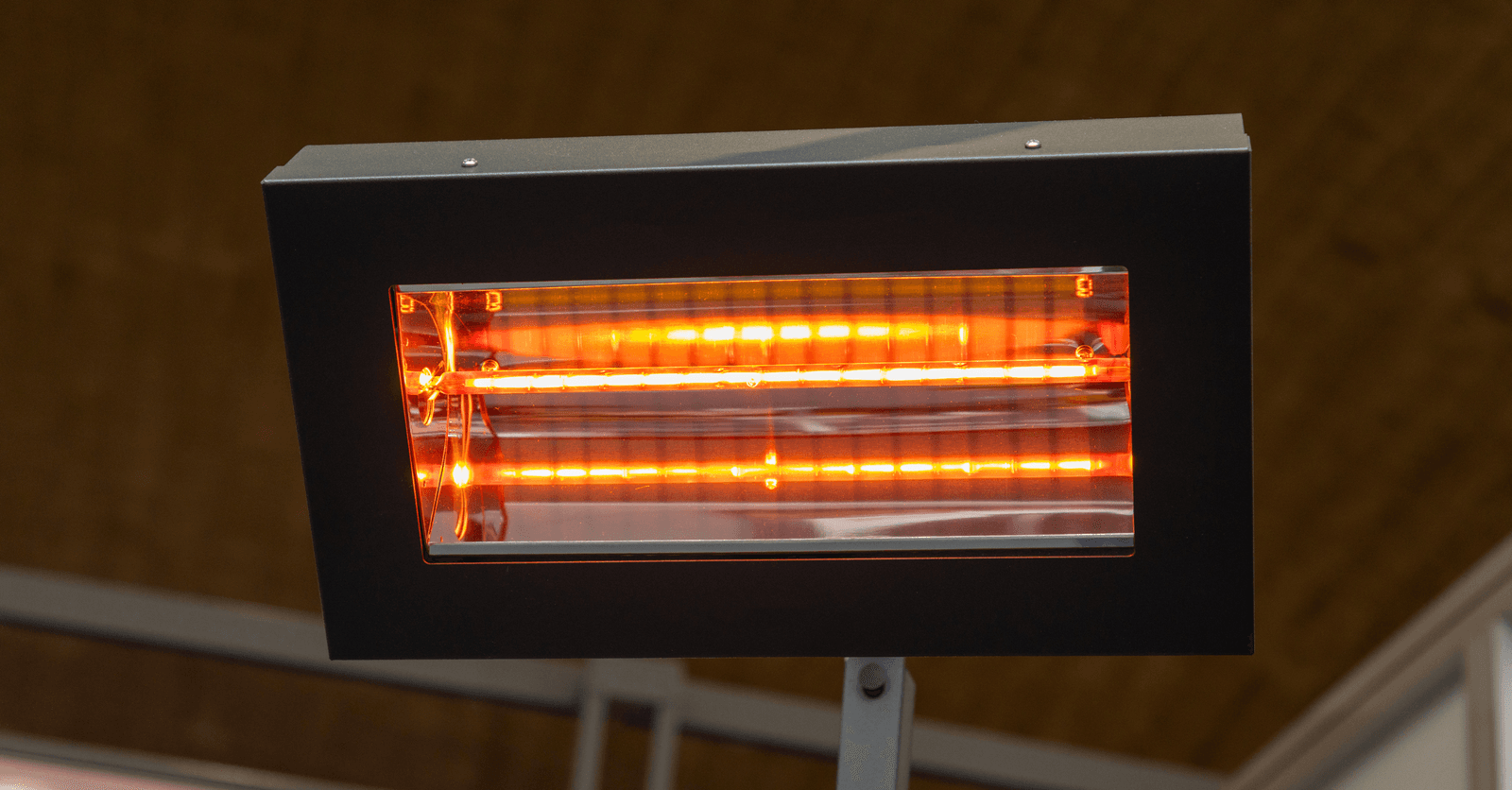
Editorial Team
•20 Sep 2024
Currently trending, infrared heating may be the new, modern way to stay warm. It has undeniable advantages compared to some traditional heating solutions, but the question remains, under what conditions and circumstances?

Editorial Team
•25 Jul 2025
It's all too easy to be overwhelmed by the countless brands and models of air conditioners. For this reason alone, you have to do plenty of research before you head out the door to buy one. Today, many air conditioner models work efficiently while also being energy efficient. However, it’s important to know each model’s features to make sure it fits your needs.

Léa Plourde-Archer
•07 Nov 2023
When we talk about decor or design on the blog, we usually focus on home decor. This allows our readers to find sources of inspiration to create the perfect layout for their home. But what about those who are looking for ideas for their business?
Editorial Team
•05 Sep 2024
Cracked grout, recessed joints, and loose tiles are some of the telltale signs of a leak, but when grout joints darken as a result of mould, and the tiles sink to the touch, it’s about time to act.

Équipe éditoriale
•07 Nov 2023
It’s difficult to deny that as soon as the chilly weather arrives, rushing to the thermostat to crank up the heat seems like the only way to keep the inside of the home warm and comfortable. What you may not realize is that even if your heaters are on full blast, the indoor temperature will only stay cosy if your home is insulated correctly.